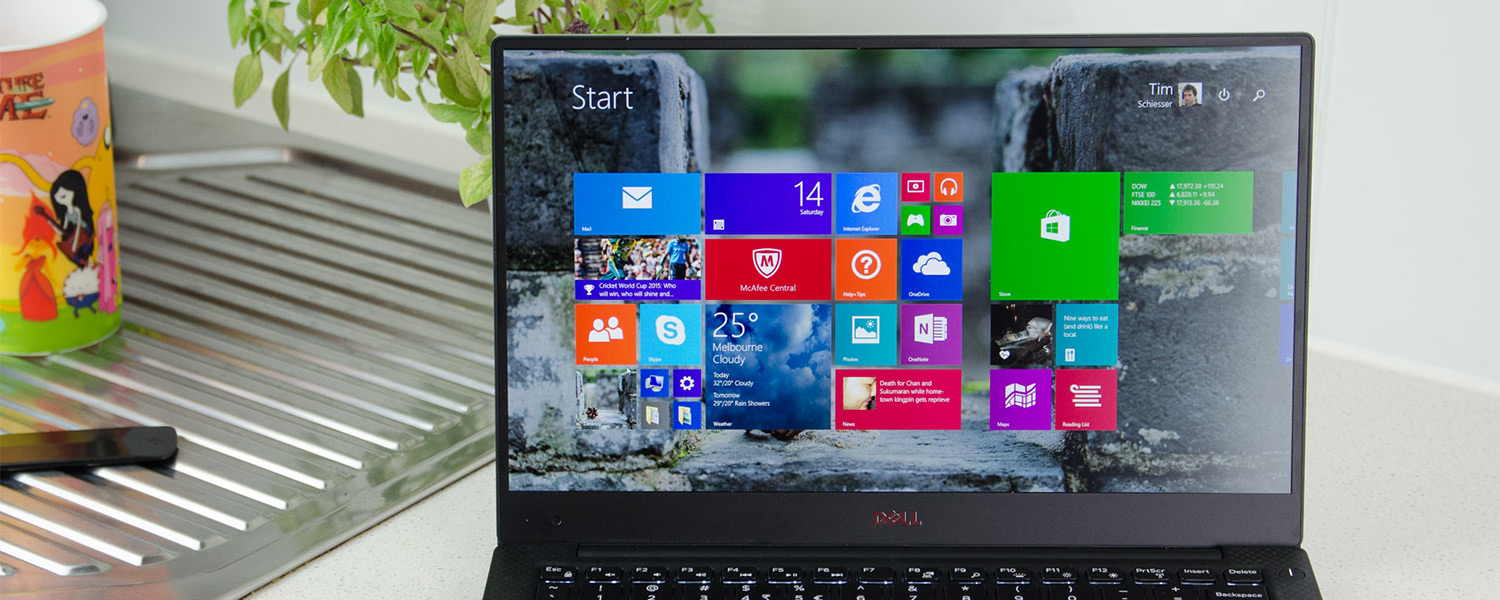Display, Keyboard and Trackpad
The 13.3-inch TFT IPS LCD display on the XPS 13 comes in one of two resolutions: 1920 x 1080 (Full HD), like in the model I received to review, or 3200 x 1800 (QHD+). The former comes with a matte non-touch finish, while the QHD+ model adds in a touchscreen with a glossy coating. Battery life is four hours better on the Full HD model, which depending on where you put your priorities might be reason enough to ditch the higher resolution display.
I find a resolution of 1920 x 1080 to be perfectly fine for a laptop of this size. It's high enough that text and images look crisp, with minimal jaggies at a standard viewing distance. At the same time, it's not so high that I have to mess around with Windows scaling settings: I was able to use this laptop perfectly with the display set to native 100% scaling, although admittedly for some people text might be slightly too small.
If you do opt for the QHD+ model, you'll definitely have to use Windows display scaling, which is still a massive mess. I believe this is something Microsoft is working on fixing in Windows 10, so we might not have to wait too long until the OS scales things nicely. Of course the QHD+ model has advantages in other areas, such as crisper image and text reproduction overall.
I would have liked to see a touchscreen option for the 1080p model, as I do find having touch capabilities on a laptop to be useful on occasion, especially when scrolling through webpages and tapping on large icons. It's not something I'd use all the time, though as Windows 8.1 and 10 are touch-friendly operating systems, there's no harm in having one.
The matte coating on the display - which can be included in the 1080p model as the display does not include a touchscreen - reduces glare and reflections, making the display very easy to see indoors or out. Viewing angles are good on this IPS-type panel, and maximum display brightness is easily good enough for usage in bright conditions. In a standard office environment, I had to turn down the brightness to around 50% to stop my retinas from getting burned.
The matte coating does have a downside in that colors don't appear as vibrant as they do on glossy panels. However the color quality of the XPS 13's display is still very good, perhaps not as good as the Yoga 3 Pro, but with a healthy dose of saturation and generally good contrast ratio.
As for the keyboard, the XPS 13 has pretty much the perfect layout, which makes adjusting to typing on this laptop very easy. Travel isn't excellent, although this tends to be the case for most thin laptops with chiclet keyboards, and I still found it quite alright to type this review on. For a keyboard that has been squished into an 11-inch body I was surprised at how it didn't feel particularly cramped, even if it isn't as good as a desktop keyboard.
There's a bit of flex in the overall keyboard assembly, which shouldn't be there for a laptop of this price. You get backlighting on all keys, handy for typing at night, and a set of easy to access functions alongside the F-keys. Save for some of the most unused keys, each is large enough and easy to hit, especially important keys like shift, enter, backspace and space.
I wasn't nearly as impressed with the trackpad. Standard mouse movement, two-finger scrolling and left clicking, either through depressing the left side of the trackpad or simply tapping, was fine, and the material used for the pad is decent. However I really struggled to right click, often left clicking instead. The trackpad requires you click the bottom right button in a very specific position to right click, otherwise it will register as a left click, which is very frustrating.
I also had a few issues highlighting text and performing other click-and-drag actions, although this can be resolved somewhat by adjusting palm rejection sensitivity in the device's settings. Hopefully a software update can resolve issues with right-clicking and optimize click-and-drag, which would go a long way to improving the trackpad experience.






